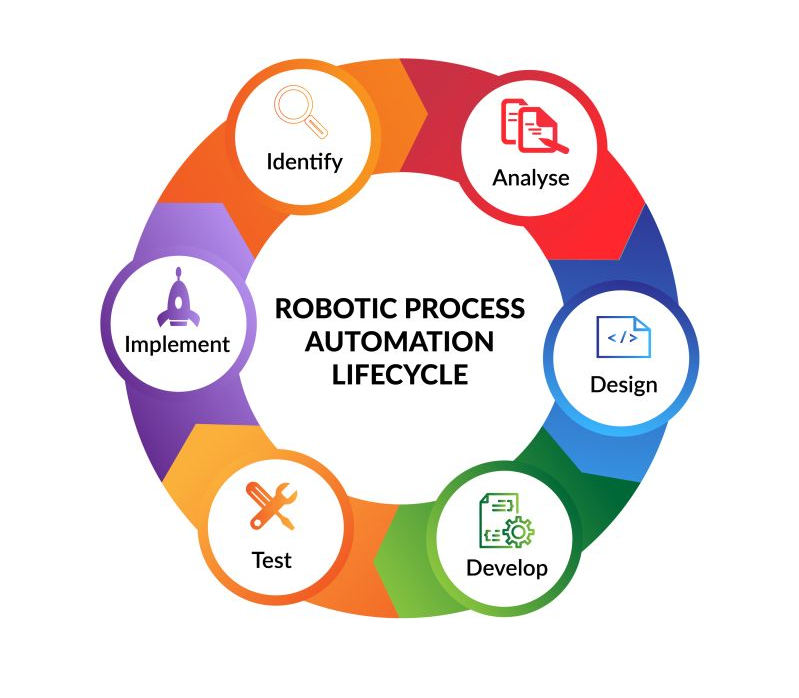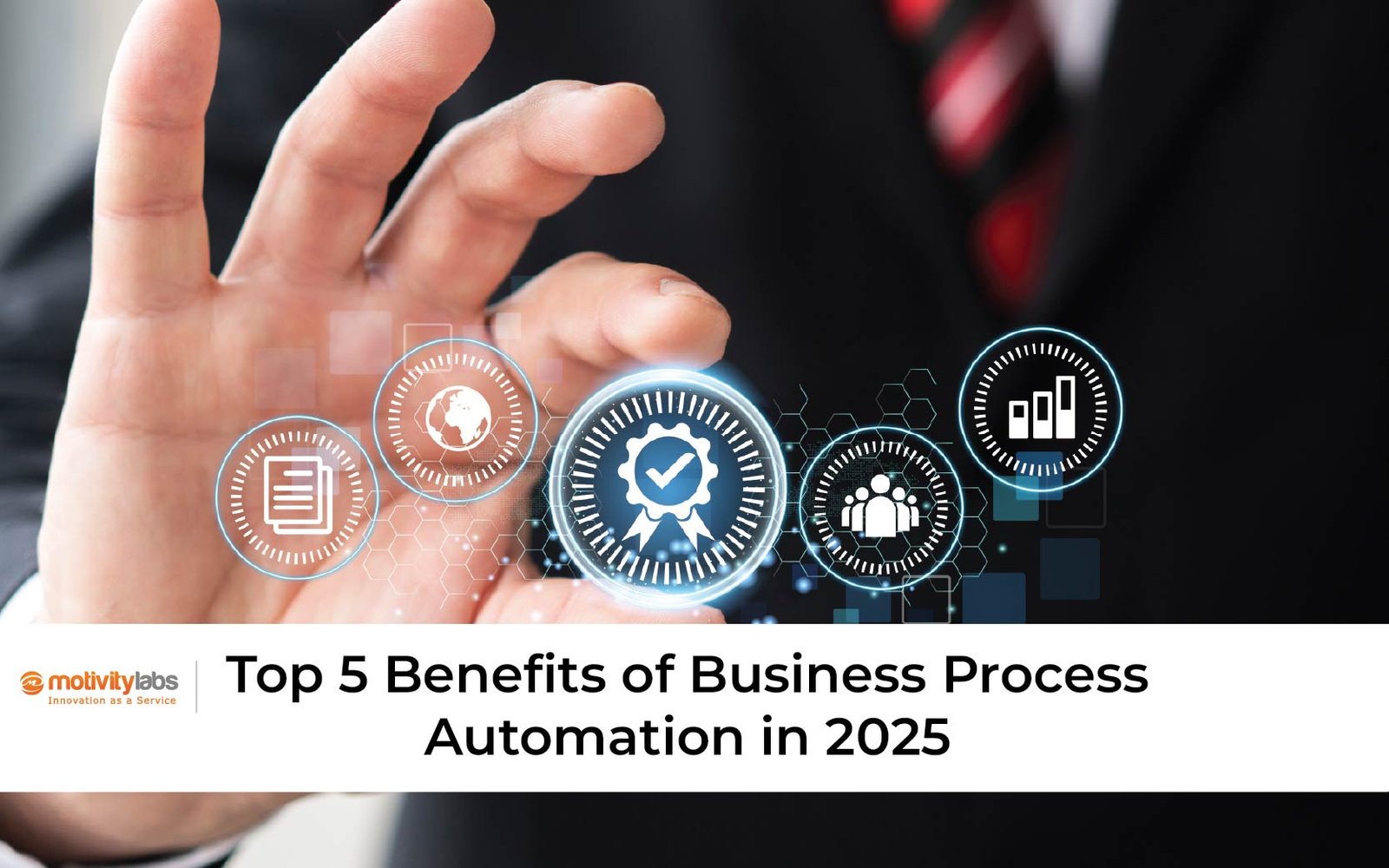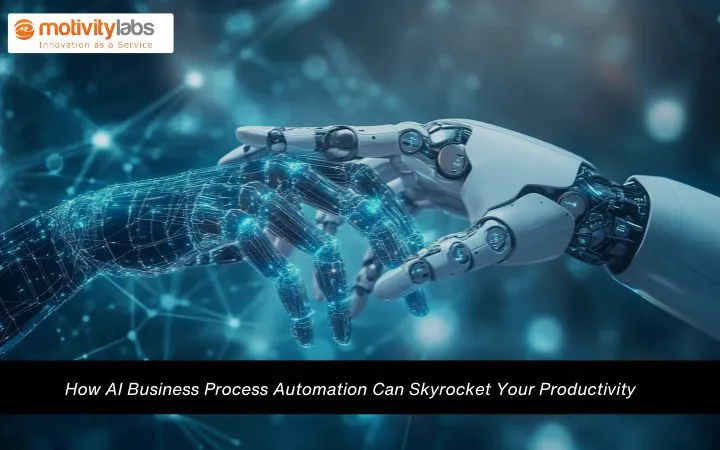What is Robotic Process Automation ?
Robotic Process Automation is automating a business process to execute a task, often repetitive, without the intervention of a human. The RPA development life cycle is like software development and RPA process flow. It includes all the phases right from the RPA implementation strategy to RPA lifecycle management.
Robotic Process Automation, RPA is fast catching up with every industry of late and businesses are keen on capturing the full potential of RPA. As the implementation of RPA can save time, money, and workforce without compromising on accuracy. Most companies around the world have some sort of repetitive jobs which are being performed by humans.
By implementing Robotic Process Automation, these repetitive jobs can be taken care of by bots. These are nothing but software applications running repetitive tasks on the Internet usually mimicking humans and human intelligence. To design a bot for a business application, the process and steps would be the same as creating software for the business.
Robotic Process Automation Development Life Cycle (RDLC)

The RPA development life cycle is a blueprint that consists of the processes of the organization to be automated, the criteria to follow, the deployment of a bot, and constant monitoring once the bot is in place.
RPA process flow is approached in a segmented process to ensure each stage of RPA can be closely studied, assessed, and improved to enhance delivery, execution, and performance. The RPA implementation strategy typically consists of the following 6 phases.
Identify

The first stage in RPA lifecycle development and testing is to identify the prospective business process or processes that can be automated through robotic processes. Remember not all processes can be automated thru robotic processes, yet.
For example, RPA prefers data in a structured format but more than 75% of data pertaining to any business is unstructured. Also, RPA is best suited for a rules-based process than a judgment-based one, even though artificial intelligence and machine learning can help to some extent with the exceptions of such rules.
Hence, it is important for RPA stakeholders together with the business teams to identify the correct processes that are viable for RPA development. Usually, RPA development follows a segmented agile and customized approach.
Analyze
The second stage in the RPA process flow is to analyze the processes that are identified as potential candidates for automation.
A process architect identifies the requirements for such processes after thoroughly analyzing the technical feasibility. The degree of automation is assessed in this stage based on the analysis and the various complexities involved in the identified processes such as- What is the saving factor in terms of time and money? Can this automation bring to the whole business process? Does this automation really improve the quality of the output? What is the business value this automation can deliver once it is put in place?

Design

In this phase of RPA life cycle development, a Process Definition Document or PDD is prepared.
As the name suggests, this PDD defines the sequence of steps involved in the process to be automated. This is also the stage in which the dependencies the automated process might have like the systems it interacts with or the regulations that impact it are identified and mapped.
Next, a flowchart or the Object Model Diagram is prepared which illustrates the sequence of steps involved in the process to be automated.
Develop
Once the process for RPA is identified and designed, the next step in the RPA lifecycle is to develop the automation scripts and codes using various RPA tools available according to the requirements and definitions arrived in the design phase.
There are various RPA tools available in the market such as Keysight’s Eggplant, Blue Prism, UiPath, Automation Anywhere, and Pega, each offering a variety of capabilities.
These tools vary according to the requirement and the level of complexity that needs to be handled. The RPA developer identifies the best tool for the process and builds the bot accordingly.

Test

In RPA lifecycle development and testing, once the bot is developed and ready, the same is tested to check whether the bot satisfies all the requirements and is performing as desired.
This post-development test phase is usually conducted by the testing team with QA. Once the bot passes the QA, the same is ready for deployment.
Implement
The last stage in the RPA lifecycle is Implementation. Once the bot passes all the QA tests, it is ready to be deployed. All the components are tested for integrity. Any issues that arise are dealt with by going back to the development and testing stages for a possible resolution.
Once the bot is implemented, it is required to continuously monitor the bot for its performance and ensure it is running successfully with optimal capacity.

The Importance of RPA Life Cycle Management
The most important capability of an RPA system is the ability to communicate with other systems either by way of API integration, screen scraping, or through any other means.
As the bots are software programs built on top of other software. Each bot has various interactions with different systems and any change in those systems may affect the performance of the bot.
Change management is an important stage in RPA lifecycle management. And proactive change management methods that can anticipate and correct the change before the bot crashes or produces unwarranted results can drastically improve the performance of the bot by bringing down the downtime and thus increasing the ROI.
Each stage in the RPA will directly or indirectly impact its performance, uptime, and its ability to continually deliver the goods it is intended for.
To enable proactive change management, bots must be connected and mapped to their dependencies so that the impending change to a legacy system or a regulation will not impact the bot in the future. This can be achieved only through meticulously planned optimal practices during each stage of the RPA lifecycle anticipating every possible scenario that the dependencies may crop up at any future stage.
In fact, many of the failures in the RPA programs are traced back to a lack of insight during each stage in the RPA lifecycle. If these are taken care of, your bot will perform to its optimal level making your RPA a huge success!


